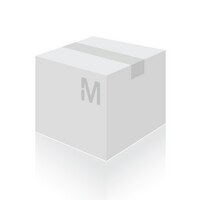PC38 Sigma-AldrichAnti-c-Fos (Ab-5) (4-17) Rabbit pAb
Recommended Products
Přehled
| Replacement Information |
|---|
Tabulka spec. kláve
| Host |
|---|
| Rb |
| Description | |
|---|---|
| Overview | This product has been discontinued. We are offering Anti-c-Fos Antibody (Cat. No. ABE457) as a possible alternative. Please read the alternative product documentation carefully and contact technical service if you need additional information. |
| Catalogue Number | PC38 |
| Brand Family | Calbiochem® |
| Application Data |  Detection of human c-Fos by staining free-floating sections. Sample: tissue sections from floating rat brain. Primary antibody: Anti-c-Fos (Ab-5) (4-17) Rabbit pAb (Cat. No. PC38) (1:20,000). Detection: DAB. |
| Product Information | |
|---|---|
| Form | Liquid |
| Formulation | Undiluted serum. |
| Positive control | Rat brain sections induced for Fos expression |
| Preservative | None |
| Biological Information | |
|---|---|
| Immunogen | a synthetic peptide (SGFNADYEASSSRC) (Cat. No. PP10) corresponding to amino acids 4-17 of human c-Fos |
| Immunogen | Human |
| Host | Rabbit |
| Isotype | IgG |
| Physicochemical Information |
|---|
| Dimensions |
|---|
| Materials Information |
|---|
| Toxicological Information |
|---|
| Safety Information according to GHS |
|---|
| Safety Information |
|---|
| Product Usage Statements |
|---|
| Packaging Information |
|---|
| Transport Information |
|---|
| Supplemental Information |
|---|
| Specifications |
|---|
| Global Trade Item Number | |
|---|---|
| Katalogové číslo | GTIN |
| PC38 | 0 |
Documentation
Anti-c-Fos (Ab-5) (4-17) Rabbit pAb Certificates of Analysis
| Title | Lot Number |
|---|---|
| PC38 |
References
| Přehled odkazů |
|---|
| Berghorn, K.A. et al. 1994. J. Histochem. Cytochem. 12, 1635. Natoli, G., et al. 1993. Mol. Cell. Biol. 14, 989. Trouche, D., et al. 1993. Nature 363, 79. Wu, R.Y.-H., et al. 1993. Oncogene 8, 2237. Colotta, F., et al. 1992. J. Biol. Chem. 267, 18278. Hoffman, G.E., et al. 1992. in NEUROPROTOCOLS: A Companion to Methods in Neruosciences 1, 52. Distel, R.J., and Spiegelman, B., 1990. Adv. Cancer Res. 55, 37. Ransone, L.J., and Verma, I.M., 1990. Ann. Rev. Cell Biol. 6, 539. DeTogni, P., et al. 1988. Mol. Cell. Biol. 8, 2251. Greenberg, M., et al. 1984. Nature, London 311, 433. Finkel, M.P., et al. 1966. Science 151, 698. |
Brochure
| Title |
|---|
| Caspases and other Apoptosis Related Tools Brochure |
Citations
| Název | |
|---|---|
|
|











